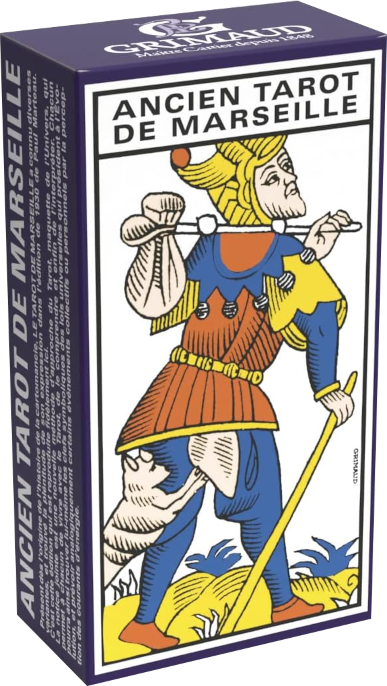
The Tarot of Marseilles is one of the oldest and most influential tarot decks known, serving as a standard for many of the tarot decks that followed. Originating from the city of Marseilles, France, this deck dates back to the 15th century, although its most famous and widely disseminated form was solidified in the 17th century. The Tarot of Marseilles cards are notable for their distinctive images, drawn with clear lines and rich symbolism that evokes medieval and Renaissance archetypes.
The Tarot of Marseilles consists of 78 cards, divided into Major and Minor Arcana. The 22 Major Arcana include archetypal and symbolic figures such as The Magician, The High Priestess, The Emperor, The Wheel of Fortune, among others, representing major life themes and lessons. The 56 Minor Arcana are divided into four suits (Cups, Swords, Wands, and Coins), each related to an aspect of human experience, such as emotions, challenges, actions, and materiality.
Traditionally, the Tarot of Marseilles is used for divination, meditation, and spiritual growth. Its archetypal images are designed to evoke deep reflections about the cosmos, human nature, and the spiritual journey. Each card acts as a mirror of the soul, reflecting aspects of the subconscious and facilitating self-knowledge. Readings with the Tarot of Marseilles can range from simple one-card draws to complex layouts like the Celtic Cross, offering detailed insights into specific questions or the consulter’s life journey.
Beyond its divinatory function, the Tarot of Marseilles is also a valuable tool for personal and spiritual development. Through meditation and the study of the images and symbols of the cards, users can deeply explore their unconscious, find spiritual guidance, and gain clarity about their life path and personal challenges.